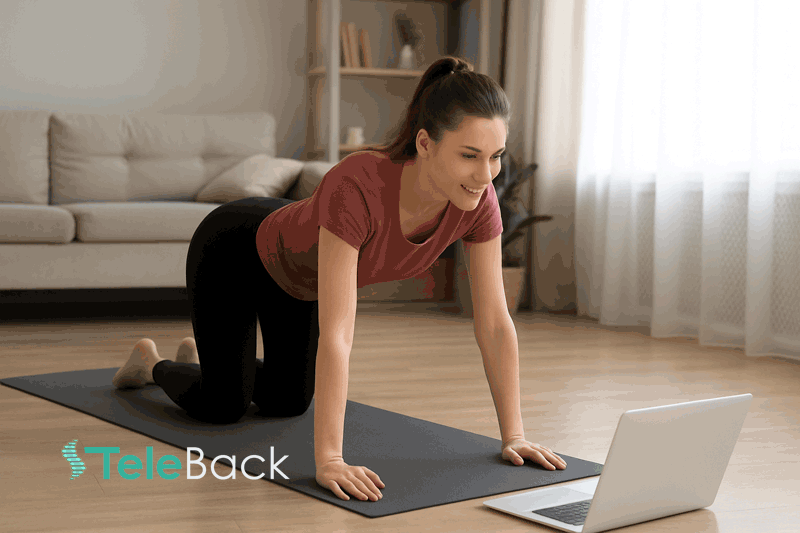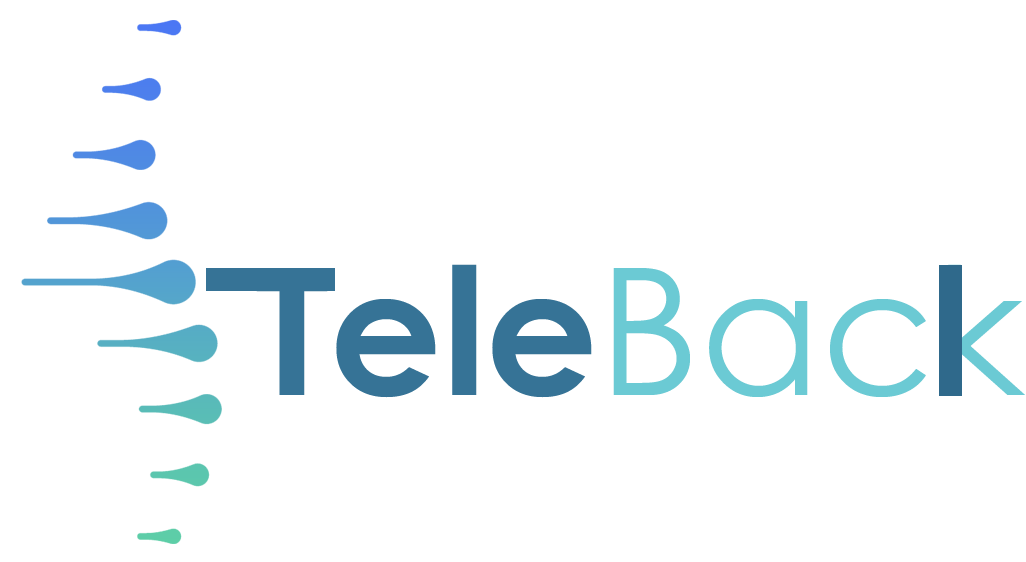
The Rise of Remote Physical Therapy
Remote physical therapy — also known as tele-rehabilitation or digital physiotherapy — has evolved from a pandemic-era necessity into a core pillar of modern healthcare. As people embrace online movement therapy and posture recovery, remote sessions have proven not only convenient but remarkably effective for many musculoskeletal and neurological conditions. The next decade will bring an even deeper transformation. Artificial intelligence, motion sensors, augmented reality, and intelligent data analytics will redefine what’s possible in personalized recovery.
At TeleBack, we see this change as an opportunity to make expert physical therapy accessible, measurable, and engaging — for anyone, anywhere.
The Near Future (Next 2 Years): Smarter, More Personalized Sessions
In the short term, technology will focus on precision and engagement
AI Motion Analysis and Posture Detection
Your smartphone or webcam will soon act as a “digital therapist.”
AI algorithms will detect joint angles, posture, and form errors in real time — giving instant corrective feedback like *“straighten your back”* or “lift your shoulder higher.”
Wearable Sensors
Affordable motion trackers will measure flexibility, range of motion, and balance — sending automatic progress reports to your therapist.
Improved User Experience
Tele-rehab platforms will evolve into complete wellness hubs — with video libraries, reminders, progress charts, and gamified achievements.
Security and Compliance
Data protection will be front and center. End-to-end encryption and GDPR/HIPAA compliance will be mandatory for trust and scalability.
The Mid-Term Future (5 Years): Immersive & Intelligent Healing
By 2030, physical therapy will become immersive, data-driven, and personalized.
Virtual and Augmented Reality (VR/AR)
Patients will train balance and coordination through immersive exercises
walking on a virtual beach or performing guided moves in AR overlays at home.
Haptic and Robotic Feedback
Small wearable devices will provide tactile feedback or gentle resistance to help correct motion, recreating the “feel” of manual guidance remotely.
Predictive AI and Personalization
By learning from thousands of therapy sessions, AI will personalize recovery programs based on a patient’s history, body type, and engagement.
Insurance Acceptance
With mounting evidence of success, more insurers will begin reimbursing remote sessions as standard care.
The Long-Term Vision (10 Years and Beyond): Continuous Recovery Ecosystems
In the next decade, physical therapy will integrate seamlessly into our environments and daily lives.
Smart Home Rehabilitation
Smart mirrors, floors, and ambient sensors will continuously monitor movement and provide subtle corrections throughout the day.
Neurofeedback and Brain-Computer Interfaces
Emerging brain-computer technology will help reconnect neural activity to physical movement, unlocking new recovery potential for stroke or spinal injuries.
Integrated Health Systems
Recovery data will sync automatically with nutrition, sleep, and emotional health metrics, offering a complete picture of wellbeing.
Robotic Telepresence
AI-guided assistants and robotic trainers may demonstrate exercises physically or monitor a patient’s form in real-time — all from a distance.
Challenges Ahead
Lack of hands-on feedback: Wearables, haptics, and robotics will help bridge the gap, but manual assessment will still matter.
Digital divide: Simplified low-bandwidth platforms and device loans can help ensure equitable access.
Privacy:Transparent consent, encryption, and data control will be essential for user trust.
Engagement: Gamified motivation, reminders, and AI-driven feedback will be key to consistency.
A Vision for the Future
Remote physical therapy is not just the future — it’s here.
But in the decade ahead, it will become more intelligent, interactive, and integrated with our daily lives.
Technology will not replace therapists — it will amplify them, helping experts reach more people with more precision than ever.
At TeleBack, we’re proud to be part of this revolution — combining evidence-based movement science with smart digital tools to make recovery personal, measurable, and inspiring.
TeleBack — Expert Back & Posture Care, Anywhere
